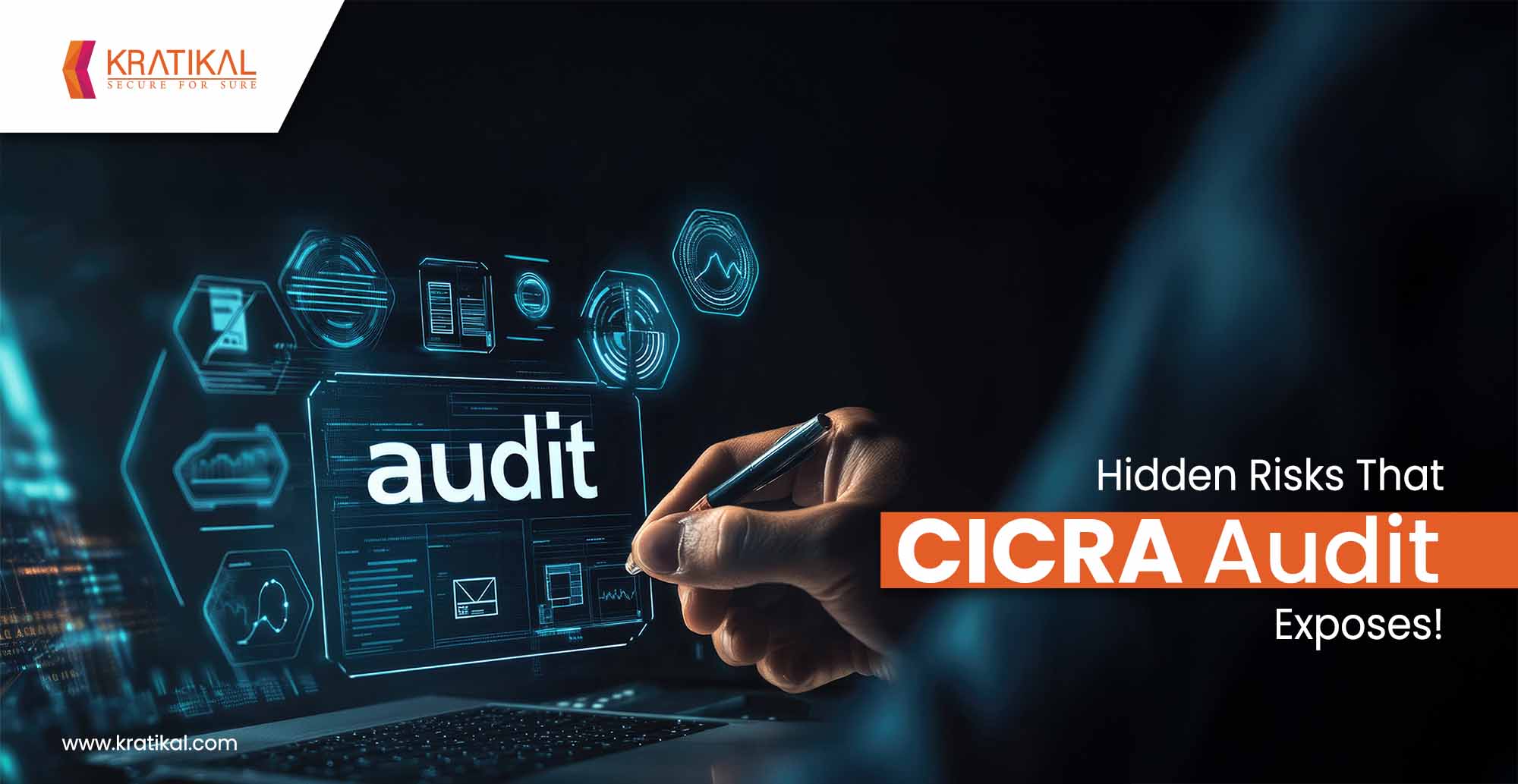Many organizations remain unaware of lurking vulnerabilities in their IT systems and data management practices. A CICRA audit shines a light on these hidden risks. In this blog, we will demystify what a CICRA audit is, who needs it, the regulations behind it, and how it uncovers subtle cybersecurity and compliance gaps. We’ll also look at the real consequences of failing such audits and why proactive compliance is crucial, all in the Indian context.
Table of Contents
What is a CICRA Audit?
A CICRA audit involves an in-depth examination of whether organizations are following all the rules and guidelines under India’s Credit Information Companies (Regulation) Act, 2005 (CICRA) and related regulations. In simple terms, this audit checks if entities handling credit information, like credit bureaus and lenders, are doing so securely, accurately, and in compliance with the law. The Reserve Bank of India (RBI) oversees these audits and can inspect records of any credit information company (CIC), bank, or authorized user to verify compliance.
Key goals of a CICRA audit include verifying that only authorized parties access credit data, that data is accurate and updated, that privacy is maintained, and that robust security controls (like access controls, encryption, firewalls, etc.) are in place. The audit can uncover any lapses, from technical vulnerabilities to procedural non-compliance, which could put consumer data or the financial system at risk. In short, a CICRA audit acts as an assurance that organizations are doing the right thing both technologically and legally when handling credit information.
Hidden Risks Uncovered by CICRA Audit
One of the biggest values of a CICRA audit is its ability to reveal hidden or less obvious risks that organizations might otherwise overlook. These audits go beyond surface-level checks and often bring to light subtle vulnerabilities or compliance gaps. Here are some of the typical “hidden” risks that such audits expose:
Incomplete or Inaccurate Data Reporting:
A CICRA audit will scrutinize how financial institutions are reporting credit information to bureaus. It can uncover lapses like failure to update corrected data in time or not reporting certain required data fields. For instance, audits have found banks that didn’t upload rectified credit data within the 7-day window after receiving error reports from a bureau, or microfinance firms not reporting borrowers’ income details to any credit bureau. Such omissions might seem minor internally, but violate regulations and can skew a borrower’s credit profile, a hidden compliance risk that can lead to penalties.
Weak Data Protection Controls
Many organizations assume their data is secure until an audit proves otherwise. CICRA audits check for robust protection of sensitive credit information. They often discover issues like databases containing unencrypted personal data, shared credentials for accessing systems, or inadequate network segmentation. These are latent cyber risks, perhaps no breach has occurred yet, but the potential for one is high. Auditors frequently find misconfigured servers, outdated software patches, or forgotten user accounts with access to critical data. Such vulnerabilities might not be obvious day-to-day, but they significantly increase the risk of a data breach if not corrected.
A less obvious threat uncovered in audits is inappropriate access privileges. Over time, employees or service providers might accumulate access to systems beyond what they need. An audit might reveal that former employees still have active accounts, or that too many staff can view sensitive credit reports without proper logging. These hidden risks can lead to data leakage or fraud from inside the organization. CICRA rules emphasize restricting data access to specified users and maintaining strict secrecy and fidelity by staff. Auditors test these controls and often find that organizations need to tighten internal access policies or improve monitoring of user activities.
Lack of Incident Response Planning:
An audit doesn’t only look for technical flaws; it also examines processes. A common compliance gap is the absence of a tested Cyber Crisis Management Plan or incident response plan. Organizations might not realize this is a risk until the audit flags it, if a data breach were to happen, they have no clear playbook. CICRA and RBI guidelines call for banks to have incident response and recovery plans in place. Hidden issues like untrained response teams or untested backup systems often emerge. Discovering these in an audit is actually fortunate; it gives the institution a chance to prepare before a real cyber crisis strikes.
Policy-Procedure Gaps and “Paper Compliance”
Sometimes, companies believe they are compliant because they have policies on paper. An audit tests whether those policies are truly implemented. It can reveal gaps such as an organization claiming to do quarterly access reviews or regular employee cybersecurity training, but having no evidence or records of it actually happening. These subtle compliance failures can be risky, for example, not training staff on phishing could lead to a successful attack. The audit’s role is to call out such discrepancies.
In essence, CICRA and similar audits often uncover risks that are not front-of-mind for management, either because they are technical in nature or because they fall through organizational cracks. By identifying these blind spots, whether it’s an unsecured API endpoint, a compliance step being skipped, or a forgotten vulnerability, the audit prevents those issues from festering into full-blown incidents or regulatory violations. Every “hidden” finding is a chance to fix something before it causes harm.
Book Your Free Cybersecurity Consultation Today!
Real-World Consequences of Failing CICRA Audits
What happens if an organization doesn’t address the risks and ends up failing a CICRA audit? In India, the consequences can be serious, ranging from financial penalties and reputational damage to operational restrictions.
Regulatory Penalties and Fines
The most immediate consequence is often a monetary penalty levied by the regulator. For instance, in March 2025, the RBI imposed a fine of ₹2 lakh on a Credit Information Company of India for non-compliance with certain provisions of CICRA 2005 and its Rules. The RBI’s inspection found that the company had failed in duties like promptly informing member banks about discrepancies in credit data and updating/correcting credit information within the stipulated 30 days. Similarly, in February 2025 RBI penalized a bank Rs 39 lakh for not complying with guidelines on furnishing credit information to CICs. One issue was a delay in uploading corrected data after a credit bureau’s rejection report.
License or Business Restrictions
If non-compliance is severe or persistent, regulators can go beyond fines. Under CICRA, RBI has the authority to suspend or cancel the registration of a credit information company for major violations. While such extreme action is rare, it remains a looming threat. Banks and NBFCs, on the other hand, could face restrictions on certain business activities until issues are rectified. For example, RBI has in the past barred banks from onboarding new customers or halted their new product launches due to governance and compliance concerns.
Reputational Damage and Loss of Trust
When a company is publicly called out for security lapses or compliance failures, customers and partners may lose confidence. Consider the case of a large Indian bank that suffers a data breach because it ignored audit findings; beyond regulatory fines, the public backlash can cause customers to shift accounts. Even credit bureaus, which usually operate behind the scenes, have a reputation to maintain; a compliance failure could make lenders question the bureau’s reliability. A stark example internationally was the Equifax breach of 2017, where a credit bureau’s failure to patch a vulnerability led to a massive data leak – the company faced not only heavy fines but also a lasting dent in its reputation.
Get in!
Join our weekly newsletter and stay updated
A CICRA audit is not just a regulatory formality but a safeguard for India’s financial ecosystem. By exposing hidden risks like weak data protection, inaccurate reporting, and insider threats it gives organizations a chance to strengthen their cybersecurity and compliance posture before regulators or attackers find the gaps. In a time when data integrity and trust define long-term business success, proactively prepare for CICRA audits and get in touch with Kratikal. Organizations that act early not only avoid penalties but also build credibility with regulators, partners, and customers.
FAQs
- Why is a CICRA audit important for financial institutions in India?
A CICRA audit ensures that banks, NBFCs, and credit bureaus comply with the Credit Information Companies (Regulation) Act, 2005. It verifies secure handling of customer data, accurate credit reporting, and strong cybersecurity controls.
- What hidden risks does a CICRA audit typically uncover?
CICRA audits often expose overlooked vulnerabilities such as outdated security patches, weak access controls, inaccurate credit reporting, unencrypted databases, inactive user accounts, and lack of incident response planning.
- How can organizations prepare for a successful CICRA audit?
Organizations can prepare by implementing strong data security measures (encryption, firewalls, access controls), ensuring timely and accurate credit reporting, conducting regular staff training on compliance, and developing a tested incident response plan.









Leave a comment
Your email address will not be published. Required fields are marked *